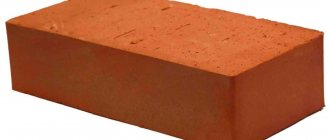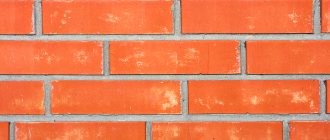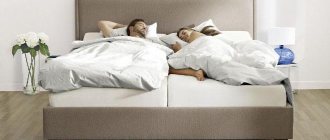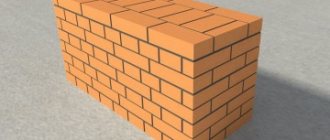Healthy sleep is necessary for the full functioning of the human body. It has a positive effect on well-being, mood, and gives strength, energy and good spirits for the whole day. But not every dream can be called healthy. And this is often due to an uncomfortable sleeping bed. Therefore, if you really want to relax, you need to approach its arrangement wisely.
It is necessary to exclude all the nuances that may interfere with a good rest - an uncomfortable bed, poor-quality bed linen. But the most important thing is to choose the right mattress. Its characteristics should suit your needs. It is necessary to take into account the design features of the product, workmanship, degree of rigidity, and most importantly, the size of the mattresses. To understand which one is right for you, we suggest you get acquainted with the variety of dimensions of these products.
Standard mattress sizes
Dimensions are one of the most significant characteristics of a mattress for the buyer. They must correspond to the parameters of the furniture for which the product is purchased. This information can be gleaned from the technical data sheet that the manufacturers supplied with the sleeping bed. If there is no such document, use a tape measure and use it to measure the length and width of the bed frame from the inside.
First of all, let's decide on the length. The most common bed length can be considered typical – 200 cm. A bed of this size will suit almost any person. It can be reduced if a short person experiences discomfort during sleep.
The length of the bed must be at least 15 cm greater than the person’s height.
The width depends on the type of bed. Depending on it, all mattresses can be divided into three key groups:
- single;
- one and a half sleepers;
- double.
For double bed
If the width of the mattress exceeds 140 cm, it falls into the double category. A bed with dimensions of 140x190, 140x200, 150x200, 160x200, 180x200 cm is considered an acceptable option for a married couple. But placing two people on a mattress with a width of 140 cm is not very comfortable. After all, each of the sleeping people ends up with only 70 cm. And if the spouses do not have an asthenic physique, they obviously will not have enough such space.
A mattress with dimensions 140x200 is optimal if:
- there is a shortage of free space to accommodate a full-fledged sleeping place;
- the parent is forced to sleep with the child due to the latter’s medical conditions - due to a mental state disorder - the occurrence of fears, panic attacks.
The most commonly used mattresses are widths of 160, 180 and 200 cm. If the width is equal to or exceeds 2 m, then the length starts from 200 cm - 200x240, 220x220, 200x240, 220x240. These sizes are not standard, but they can be made to order.
For a single bed
If you don’t need a double bed, but for some reason the width of a single bed is not enough for you, consider a one-and-a-half-size option. The line of such mattresses includes products with dimensions - 100x200, 110x190, 120x190, 120x200, 130x190, 130x200 cm. Such a bed will not restrict your movements and will allow you to sit comfortably while sleeping. Therefore, if there is the possibility of installing such a model in the bedroom, consider it in more detail. A bed like this can accommodate two people, but this will reduce the degree of comfort. If you decide to use a single bed with a partner, we recommend giving preference to options with a width of 130.
For single bed
Single mattresses can only be used alone. The dimensions of these models are as follows - the width can range from 80 to 90 cm, and the length from 180 to 200. Manufacturers offer the following options for standard sizes of single mattresses - 80x180, 80x190, 80x200, 90x190, 90x200 cm.
If the product is purchased for a child, you can choose a model with a length of up to 170 - 175 cm. However, you need to keep in mind that closer to adolescence the bed will have to be changed. For a teenager, the most comfortable option would be a bed with a size of 80x190 cm. This is the most profitable option in terms of money, since it will not need to be changed as your child gets older and grows. A bed with such a mattress can be placed in any small apartment without any problems. That is why models with such parameters are installed in hotels and hostels.
More details about the sizes of standard models can be found in the table.
How to choose a standard size mattress
When choosing a mattress, the main factor is the size of the bed, which the selected model should ideally fit in length and width. The height can be different and depend on the design of the mattress and its filling, but as a rule it is also recommended for a certain type of sleeping place. Usually, the parameters of the bed can be determined by the technical characteristics attached to the furniture or measured using a tape measure if the product is old and there is no data about it anywhere. Having the obtained figures in hand, you can ask the seller about the type of mattress required in terms of length and width.
When choosing a mattress, the main factor is the size of the bed, which the selected model should ideally fit in length and width.
It is strictly not recommended to measure the size of an old mattress, since during use it could sag, shrink or become deformed, and a difference of 2-3 cm can be decisive. When measuring the niche under the mattress, an error of no more than 1 cm is allowed, i.e. if, for example, the dimensions of the bed are 159 by 200 cm, it is quite possible to buy a standard mattress measuring 160 by 200 cm.
Always remember - the sleeping area should be measured according to the size of the bed and not according to the size of the old mattress, if there is one.
You should not buy a mattress with significant deviations. The upholstery will wear out quickly due to constant movement. Only a tightly fitting mattress will make your sleep comfortable and the life of the product durable.
Mattress length
To feel “in your place” while relaxing, the length of the mattress should be at least 15 cm longer than the person’s height. Those whose height exceeds 175 cm are guided by a bed 200 cm long; for shorter people, a mattress of 190 cm will be sufficient. There is also an intermediate type - 1950 mm. There is a wide variety of sizes on the market, so everyone can choose the best option for themselves and their bed.
To feel “in your place” while relaxing, the length of the mattress should be at least 15 cm longer than the person’s height.
Mattress height
Depends on the tastes and preferences of the buyer, as well as on the properties and design of the mattress. Orthopedic models generally rise above the level of the sides of the bed. A thickness that extends beyond the frame is recommended for obese people, under whose weight the mattress will sag.
- Springless mattresses are produced in thicknesses from 2 cm to more than 20 cm. The average size is 16 cm.
- Products with springs are produced in heights from 18 cm to 32 cm. The average is 22 cm, and the elite, expensive and most comfortable models, which have the best orthopedic properties, are designed half a meter.
The height depends on the tastes and preferences of the buyer, as well as on the properties and design of the mattress.
Mattress width
By width, products are divided into single, double and one-and-a-half:
- A sleeping place designed for one person has a width of 80-90 centimeters. Another type of such mattress is 120 cm, which is not enough for two, but for sleeping alone it is an excellent wide option.
- Manufacturers produce double products from 140 cm to 200 in increments of 20 cm. The standard width is 160 cm - this is what all sets of double bed linen are sewn on.
- Round mattresses are in demand by lovers of a non-standard approach to organizing a sleeping space. Similar bases are also widely represented on the mattress market. Small ones have a diameter of 200-120 cm, medium ones -220, and larger ones start from 230 cm.
By width, products are divided into single, double and one-and-a-half models.
Euro mattress sizes
European models are slightly different in size from domestic ones and are indicated in mm. The size range has a step of 10 cm. We invite you to familiarize yourself with the standard sizes of a sleeping place adopted in European countries.
- single beds have parameters - 80x180, 80x190, 80x200, 90x190, 90x200 cm;
- double - 1400x2000, 1600x2000, 1800x2000, 1900x2000, 2000x2000 mm.
The concept of a single-size mattress does not exist in the European system.
The most popular mattress sizes
The first place in popularity is occupied by a double mattress measuring 160x200 (1600x2000). This can be said to be a standard double bed.
Following it are single sizes: 80x190, 80x200 and 90x190. If the mattress is single, then these are the dimensions that are usually asked. With a slight lag comes the size 90x200.
Rounding out the so-called “hit parade of sizes” are single and double sizes: 120x190, 140x200, 180x200, 200x200
Please note, despite the fact that length 195 cm is standard - it is not popular, and length 190 is popular only with a certain width, the leader, of course, is length 200 cm.
Sizes of mattresses for newborns
Mattresses for the smallest – for newborns – also have certain standards. The most common size is 60x120 cm or 70x140 cm. Such models are easy to find, since they are presented in the lines of all manufacturers of this range.
But some of them went further and developed a more variable size range with parameters from 60 - 80 to 120-160.
The thickness of children's mattresses for newborns is small - as a rule, they are thin. The height ranges from 6-13 cm. If the product is equipped with a spring block, its thickness can reach 16-18 cm. When choosing a product, it is necessary to take into account that crib manufacturers recommend mattresses of a specific height for use.
Types of mattresses
Of course, when installing individually designed beds in the bedroom, the design and size of which correspond to the personal requirements and ideas about the comfort of the homeowners, it is possible to order a mattress. However, most often you have to rely on the standard parameters of these products. It is also important that bedding sets are produced to fit the dimensions of the most commonly found models.
The sizes of mattresses on the bed are usually standard, but they depend on the sleeping place itself
There are various types of mattresses available that can be intended for use by children or adults.
Children's mattresses
Children's mattresses
The current standard (GOST 19301.3*2016) establishes the minimum sizes of beds installed for children. Newborn babies and babies under 3 years old need structures with dimensions of at least 600 x 1200 mm. For children aged 3 to 7 years, it is expected to use sleeping places measuring at least 600 x 1400 mm. Of course, private farms usually adhere to individual standards, but current standards should be taken into account.
The most popular mattress size for babies aged 0...3 years is 600 x 1200 mm. At the same time, products with other parameters are also produced: 500 x 1000 mm or 700 x 1400 mm. The latter option can also be used for children’s sleep in the future. The spine of babies is not yet formed, so it is important to pay attention to the characteristics of the base. The mattress must be hard (it is better to use models without spring blocks). Its thickness should not exceed 100...120 mm.
The dimensions of the mattress must correspond to the internal dimensions of the crib, that is, the dimensions of the sleeping place
Older children need more space. Usually after three years they sleep in a crib that will serve them for many years. The width of mattresses must exceed 700 mm, and their length - 1400 mm. The optimal size of a sleeping place that can be used for sleeping by a teenager is considered to be 800 x 1900 mm. It is recommended to choose orthopedic models with a height of 200 to 250 mm.
Standard adult models
One of the mattress options for a double bed
Today, a classification of mattresses and beds is accepted depending on the width of the bed.
| Type of mattress | Size (width/length), mm |
| Single | 800 (900) x 1900 (2000) |
| One and a half | 1200 x 1900 (2000) |
| Double | 1400…2000 x 1900…2000 |
| Family | 1800 (2000) x 1900 (2000) |
One-and-a-half mattresses are perfect for creating a sleeping place for one person. You can sleep on them together, but such a vacation cannot be called comfortable. For a double bed, the most common product size is 1600 x 2000 mm. If there is a small child in the family who is used to sleeping with their parents, a family sleeping place would be an excellent option.
If children like to sleep with their parents, it is worth ordering a wide non-standard mattress
Important! It is not difficult to purchase bedding for all standard mattress sizes.
Mattresses for circle-shaped beds
Today, many people like to equip their bedroom with a custom-shaped bed. For any design, ordering a suitable mattress is not so difficult. For circle-shaped beds, standard models of various diameters are produced (2000 mm for single beds, 2200 for one-and-a-half beds and from 2300 mm for double beds).
Round mattress
Sizes of children's and teenagers' mattresses
The most popular option for children is 60x120 cm. But when purchasing, the same rule applies as for adults - the length of the product must be at least 15 cm greater than the height of the child sleeping in it. Accordingly, you can choose the following sizes - 65x125, 70x140 cm.
If the baby is already 3 years old, it is better to immediately choose a larger option, since the child is constantly growing, and a small crib can very quickly become cramped for him. The hierarchy of standard sizes in this case is as follows - 60x120, 70x150, 70x160, 80x160 cm.
It is also better for a teenager to purchase a sleeping surface “for growth.” Thanks to this, you can eliminate unnecessary material costs in the future. The standard dimensions offered by manufacturers for teenagers are 60x170, 80x180, 70x190 cm. But it is better to purchase a one-and-a-half bed, which will provide comfortable rest even for a large child. The thickness of the product - from 6 to 12 cm - does not always contribute to proper rest, especially if the child’s weight is almost the same as that of an adult. It is best to choose products that do not have springs and have hard filling inside.
Sizes of children's mattresses
The sizes of children's mattresses directly depend on the age of the child and the dimensions of the sleeping area. To decorate a cradle or baby crib, bases with parameters 60×120 or 65×125 . For children aged 2 to 5 years, mattresses of sizes 70×140 and 70×160 . The characteristics of a sleeping place for teenagers are selected individually, taking into account physiological characteristics and the need for posture correction. The available sizes of standard bases are 70×190, 70×195, 70×200, 75×190 and 75×200, 65×200, 65×195, 65×190, 60×195, 60×200, 60×190 .
Size 60x120
The most common size for small mattresses. Thin bases with a height of 6 to 8 cm are suitable for decorating a baby's sleeping place. Hard coconut coir is used as a filler, which provides the necessary degree of surface hardness. Rigidity plays an important role in the formation of the cartilage tissue of the baby’s spine, eliminates the pressure of the skeleton on the internal organs and prevents the possibility that the child may suffocate in his sleep, burying his face in the soft layer.
Size 70x140
The main criterion when choosing a mattress for a child of preschool or primary school age is the length of the base. As a rule, such products are bought “for growth.” The optimal size base should be at least 15-20 centimeters longer than the user’s height. In this regard, models in this size range are considered universal and are suitable for children from 2 to 7 years old. Children's mattresses differ in thickness and filling. The maximum height range is from 6 to 13 cm.
Size 70x160
The best option for preschoolers and schoolchildren from 6 to 12 years old. Most products provide anatomical support for the spine and allow you to correct posture or form natural curves of the skeleton. Springless mattresses have a thickness of 12-16 cm, and models equipped with a spring block (dependent or independent) are up to 18 cm. If you have two children, such designs will be especially relevant when designing a bunk bed.
Round mattress sizes
If you want to create an interesting design or a romantic setting, you can use round models. They have only one parameter that determines their size - diameter. Let's consider the dimensions of round mattresses depending on the number of beds and usable area for a good night's sleep.
- up to 200 mm - with such dimensions, mattresses correspond to the size of beds for children or teenagers;
- single beds – have a diameter from 200 to 230 cm – a standard bed with one sleeping place;
- double – from 240 cm – an alternative to a double bed with a width of 180 cm.
Non-standard mattress sizes.
Along with standard mattresses, non-standard ones are also manufactured. They can be not only of non-standard width or length, but also of non-standard shape. In the form of a circle, for example, or a polygon. Mattresses under the podium, which are also classified as non-standard, deserve special attention. Today, almost any manufacturer produces non-standard sizes, so if you need exactly this, then you shouldn’t be upset, just voice your preferences and order.
Example of a non-standard shaped mattress
Important! Inaccurate measurement of the sleeping place can lead to a number of problems (irregularities and depressions, crevices along the edges, etc.), which, in turn, affect not only the comfort of the sleeping place, but also reduce the service life of the product. Take proper care when measuring your sleeping area.
Measures for determining the size of a sleeping place
Before you go to the store to buy a mattress, it would be useful to obtain information about the variety of existing measurement systems.
- Metric . This system has been accepted for use in Russia and some European countries - Italy, France, Germany. Standard units of measurement are used - meters and sentiments. The mattress widths are available in 5 or 10 cm increments.
- English . Measurements are taken in feet or inches. This system is common in English-speaking countries - Great Britain, USA, Australia. With a mattress length of 80 inches and a width of 78 inches, the equivalent in the metric system would be 203.1 and 198.1 cm, respectively. Translating values from one system to another often leads to errors in selecting a European or Russian mattress for an English bed or vice versa. The names of the standards also do not match. Thus, the size of a European semi - 1600x2000 is considered in America to be a double, and also the most common and cost-effective option.
Compliance with dimensions is a very important parameter when choosing a mattress - the standard size of an English double bed is 1400x1900 mm, and a European one will have a width and length of 1800 and 2000 mm, respectively. The American single bed called extralong is three cm larger than its European counterpart - 1900x800, 1900x900 mm.
The easiest way to avoid a mismatch between the size of the mattress and the dimensions of the bed is to choose products from the same brand or at least from one country. Alternatively, you can order products in a custom size.
How does body weight affect the height of a mattress?
The mattress must protrude from the bed frame for any model of sleeping bed. Heavy consumers are advised to purchase the tallest version of the product.
The height of the mattress is primarily influenced by its internal filling. Depending on this, the following models are distinguished:
- spring ones - their standard height is from 20 to 22 cm. There are variations from 18 to 32 cm. In special cases, companies launch elite modifications with a thickness of up to 50 cm. But this is not the limit. By individual order, it is quite possible to construct products from 50 cm;
- springless - such models most often have a height of 16 cm. There are alternative options from 15 to 24 cm. The thinnest products with a height of 2 to 10 mm are used only as flooring for a worn out sofa or temporary covering for a folding bed or chair that transforms into bed. In addition, they can be used to adjust the degree of rigidity of the base product. This type of sleeping surface is called a topper.
When choosing the height of a mattress, you should focus on the person’s weight. Any model has a certain elasticity coefficient. The more intense the compression of the filler occurs when body weight is applied to it, the greater the level of resistance it causes. Higher mattresses increase their functionality.
Depending on the height, products can be divided into the following types:
- thin - the design includes spring blocks with a strict weight limit. The product with a height of 11-15 cm is intended for users weighing up to 60 kg. There are no such strict restrictions for springless mattresses, so their distribution range is greater. Thin products are convenient to transport and store when folded into a roll;
- medium - the height of springless models in this category ranges from 10-15 cm, spring ones - from 15 to 30 cm. This is the most common size option offered on today's market;
- high - the high height of mattresses allows you to remove weight restrictions due to the use of fillers with layers of serious thickness. Expensive premium products can easily support sleepers weighing up to 170 kg.
How to choose the right mattress size for you. Adviсe
Obviously, when arranging a comfortable sleeping place, it is necessary to take into account the height and build of the user. In this case, the following parameters of the mattress are of great importance.
- Length. It should be at least 15 cm larger than the height of the sleeping person. Thus, people shorter than 175 cm will find mattresses 190 cm long relatively comfortable. The mattress must exactly match the sleeping area in the bed. There is no need to allow allowances and order a product in a slightly smaller size.
- Height (thickness). It depends on the presence of a spring block. It is advisable that the height of the mattress rises slightly above the bed frame, otherwise it will be uncomfortable to lie down. Also consider weight: under fat people the mattress will sag more. In general, the standard height of a mattress for adults varies between 15–32 cm. Thin models (2–10 cm) are used only in the form of mattress covers (additional layers that are placed on a sleeping place, for example, on the surface of an old sofa).
- Width. According to this parameter, one-, two-bed and one-and-a-half models are distinguished; the dimensional characteristics are given above. The choice is made depending on the number of sleepers. The most comfortable for one person are one-and-a-half beds; in tight spaces, you can also limit yourself to a single model.
Product weight
The weight of the mattress itself depends on the type of internal filling and the dimensions of the product. A spring block has a weight per square meter from 10 to 13 kg, a springless one - 15-18. The weight of the product does not affect the service life of the bed, but is a significant parameter during transportation. The height of the product does not affect the level of anatomical characteristics, but the variants of their manifestations, but if the budget allows, it is better to purchase the plumpest option. The higher the mattress, the more different layers of filler it contains, and this makes the product more comfortable and increases its orthopedic properties.
Mattresses for individual orders
Most often, buyers select a sleeping bed for a specific place in the room. In this case, it is necessary to take into account the author’s design idea and the characteristics of the body of a particular user. Standard models cannot always satisfy all the needs of discerning customers. They may not be suitable for the following reasons:
- does not match the size of the bed from the European manufacturer. Due to mismatched markings, certain problems may arise;
- You need a product that will fit a bed with an exclusive, fantasy shape. This option can only be made to order;
- A product is required for a person with non-standard height or weight. Mass production can offer models that do not exceed 200 cm. If a person’s height is 2 m or higher, it will not be possible to provide the difference between his height and the length of the sleeping bed necessary for comfortable sleep. A similar problem exists with the selection of models for people of corpulent build. This requires a reinforced structure and an increase in the number of layers in the structure of the product.
If you can’t find the best option in stores, contact a local company that specializes in custom manufacturing of products.
What are the sizes of mattresses?
Mattresses made in Europe and Russia are common in Russia. This is justified by the fact that their dimensional grids coincide and there is no situation that the selected mattress will be larger or smaller than the base of the bed. The main dimensional varieties of products are as follows:
- Children's. Used for children's beds and having restrictions on the height and weight of the user.
- Single. Suitable in size for the average weight and height of one adult.
- One and a half. Assuming accommodation for one person, but with greater comfort.
- Double. Designed for two full beds.
- Euro (Euro standard and king size). Variations of the double model providing maximum space.
Features of orthopedic mattresses
The orthopedic options are filled with independent springs, each of which is placed in a separate case. Thanks to this, the structural elements do not affect each other. Springless products with high orthopedic properties are made on the basis of natural latex, coconut coir, and foam rubber.
Orthopedic mattresses must be placed on a hard, smooth surface or a base specially designed for them, which has a curved shape.
You can extend the life of your mattress by turning it over to the other side every six months.
Tips and tricks for choosing mattresses
The most important criterion when choosing a particular model is its convenience. For a long time it was believed that hard options should be preferred. However, it is much more beneficial to sleep on surfaces that can adjust to the weight of each part of the body. Experts recommend basing your choice on your own feelings and financial capabilities.
Products must be accompanied by certificates of quality.
Replacing the mattress
A high-quality product can last from 8 to 10 years, a budget option - from 3 to 5 years. The data is approximate, since in each specific case various factors play a determining role.
There are several signs that it is time to part with a worn-out product:
- springs began to be felt;
- the surface is deformed;
- the coating has become excessively soft or hard;
- abrasions have formed;
- there was a crackling, creaking, grinding sound.
Proper use of the surface can significantly increase the service life. It is necessary to turn the product over once every two or three weeks immediately after purchase in order to stabilize it by changing not only the “top-bottom” position, but also the “head-to-foot” position.
If there is a large difference in the weight of the spouses, you should choose a product with a combination of two zones of different hardness. This will prevent the lighter partner from rolling into the depression formed by the heavier one.










